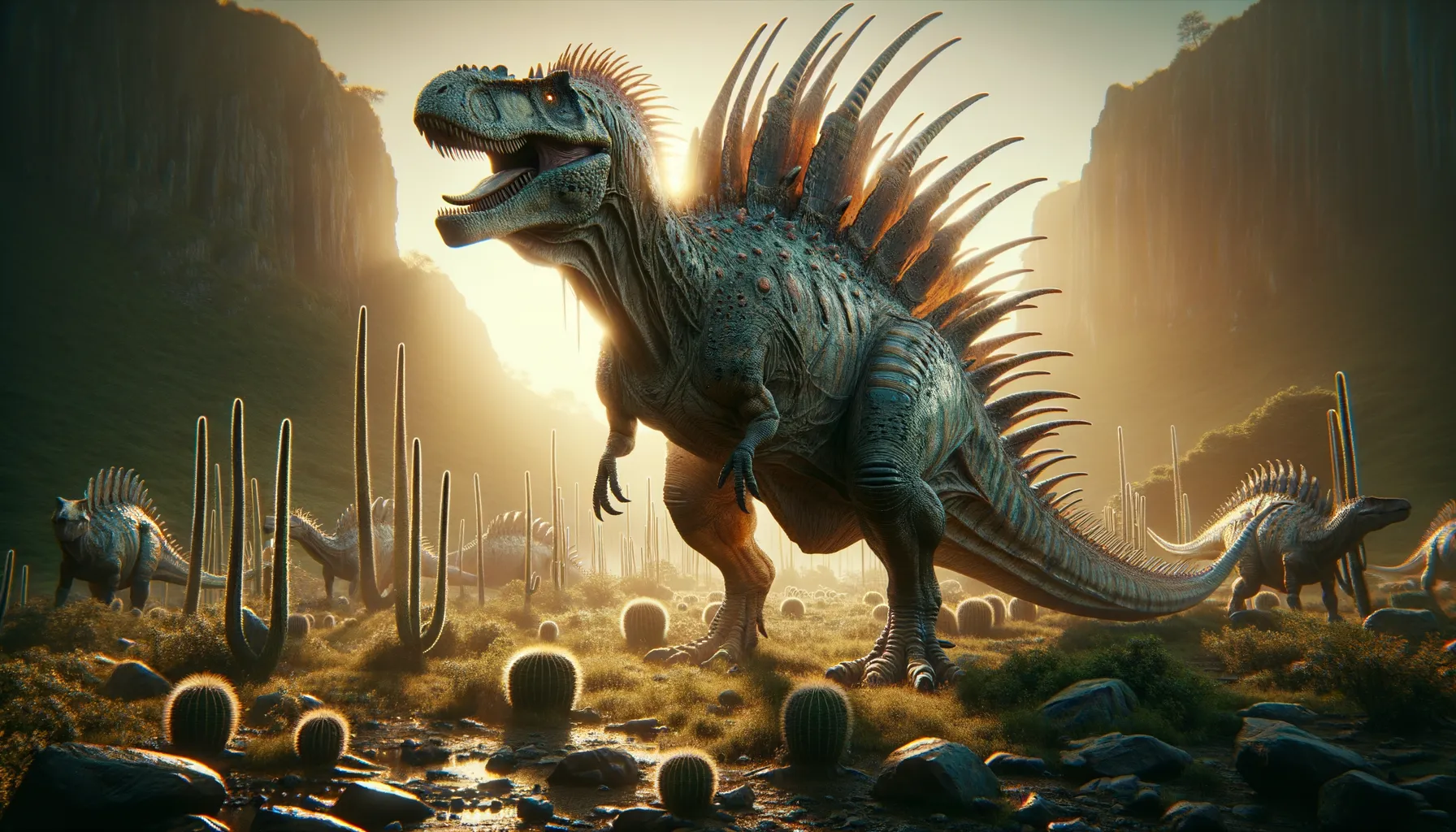
Scolosaurus
Impenetrable armor, unbeatable defense!
Period
Cretaceous
Length
Roughly 6 meters long.
Height
About 1.7 meters at the hips.
Weight
Approximately 2,000 kilograms.
Scolosaurus was a heavily armored dinosaur that roamed the Earth during the late Cretaceous period. Known for its impressive body armor and tail club, it was well-equipped for defense against predators. This plant-eating dinosaur had a slow pace but was capable of withstanding attacks due to its bony plates and spikes. Its fossils have primarily been found in North America, providing vital insights into its existence and habitat.
Diet
Scolosaurus was a herbivore, primarily feeding on ferns, cycads, and other low-lying plants. Its mouth was adapted to efficiently chop and grind the vegetation it consumed.
Hunting
As a herbivore, Scolosaurus did not hunt. Instead, it spent its time foraging for plants. Its primary method of defense was its armored body, making it difficult for predators to attack.
Environmental challenges
Living during the Cretaceous period, Scolosaurus faced challenges such as severe climate changes and volcanic activity. The competition for food with other herbivores was high, which could impact food availability. Predators posed a constant threat, but its armor provided substantial protection. Droughts and changes in vegetation would have required Scolosaurus to adapt its dietary habits.
Speed
Slow due to its heavy armor.
Lifespan
Estimated around 25 to 30 years.
First discovery
First discovered in Alberta, Canada, in 1914.
Fun Facts
- Scolosaurus was a tank-like dinosaur covered in bony plates for protection.
- It lived during the Late Cretaceous period, around 76 million years ago.
- Scolosaurus belonged to a group of dinosaurs called ankylosaurs, known for their armor and clubbed tails.
- Fossils of Scolosaurus have been found in both Canada and the United States.
- Its name means 'pointed spear lizard,' referring to the spikes along its body.
- Scolosaurus was a herbivore, feeding on plants with a beak-like mouth.
- Despite its heavy armor, Scolosaurus was relatively small, about the size of a car.
Growth and Development
Scolosaurus hatched from eggs and went through a juvenile phase where its armor slowly developed. As it matured, its distinctive bony plates and spikes hardened, offering better protection. Growth rates depended on environmental conditions and food availability.
Habitat
Scolosaurus lived in lush, forested areas with plenty of vegetation. It thrived in environments where its plant-based diet was abundant. Wetlands and riverbanks provided the necessary resources for its survival. The varied terrain of the Cretaceous period offered both challenges and advantages for its lifestyle.
Interaction with other species
Scolosaurus shared its habitat with various other herbivorous and carnivorous dinosaurs. It used its armor and tail club to deter predators and protect itself when threatened. Other herbivores would be both competitors and companions, while carnivorous interaction mainly involved evasion and defense.
Natural lifespan
Scolosaurus could naturally live up to 30 years.
Reproduction
Scolosaurus reproduced by laying eggs in nests, likely made in secure, hidden locations to avoid predation. The hatchlings were smaller versions of the adults, with softer armor that hardened as they aged. Parental care details are not well known, but some protective behavior is assumed.
Social behaviour
Scolosaurus may have lived in small groups or solitary, depending on the food availability and predator threat. Its social interactions were likely minimal, focusing primarily on mating and basic defensive behaviors. Group living could provide some safety in numbers against predators.
Fossil locations
Fossils of Scolosaurus have been predominantly found in Alberta, Canada, and Montana, USA. These significant discoveries have helped paleontologists understand its structure and way of life. The findings in these areas have offered insights into the diversity of Cretaceous ecosystems in North America.
